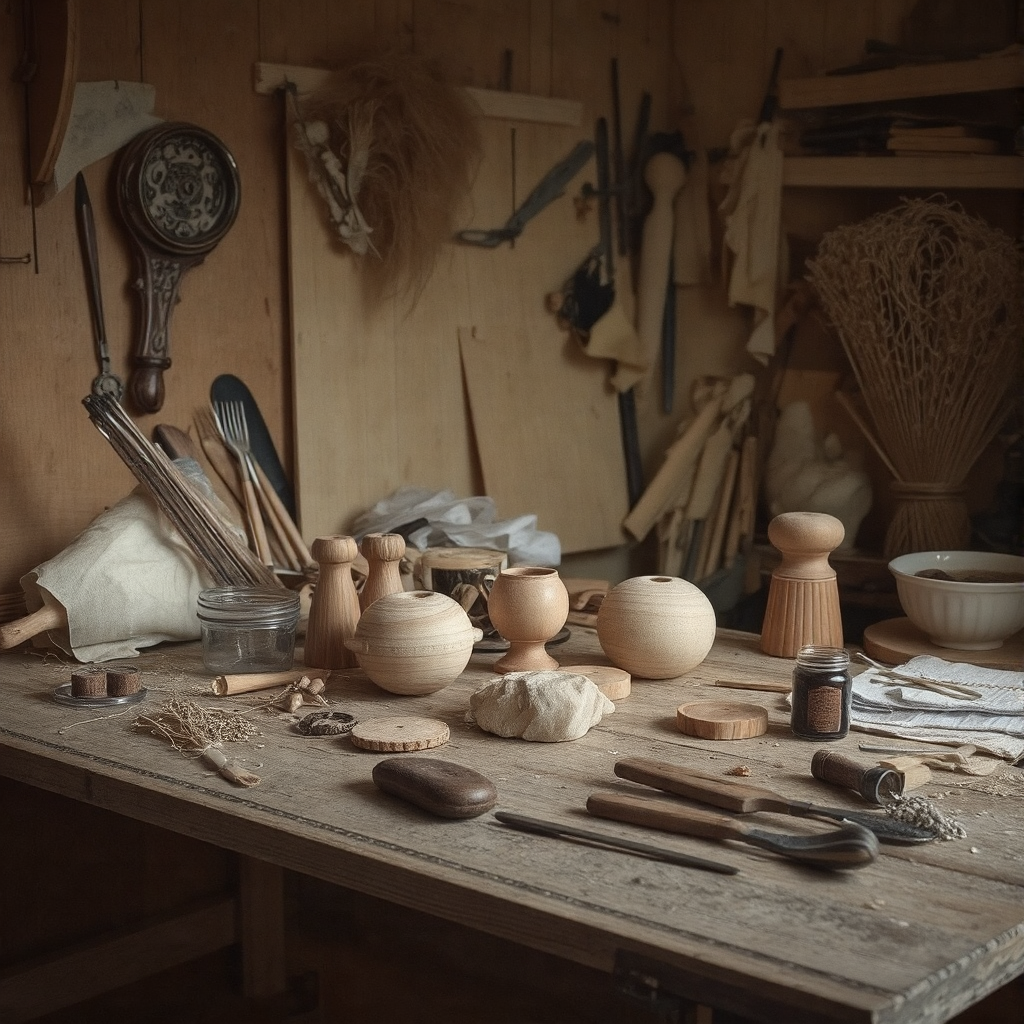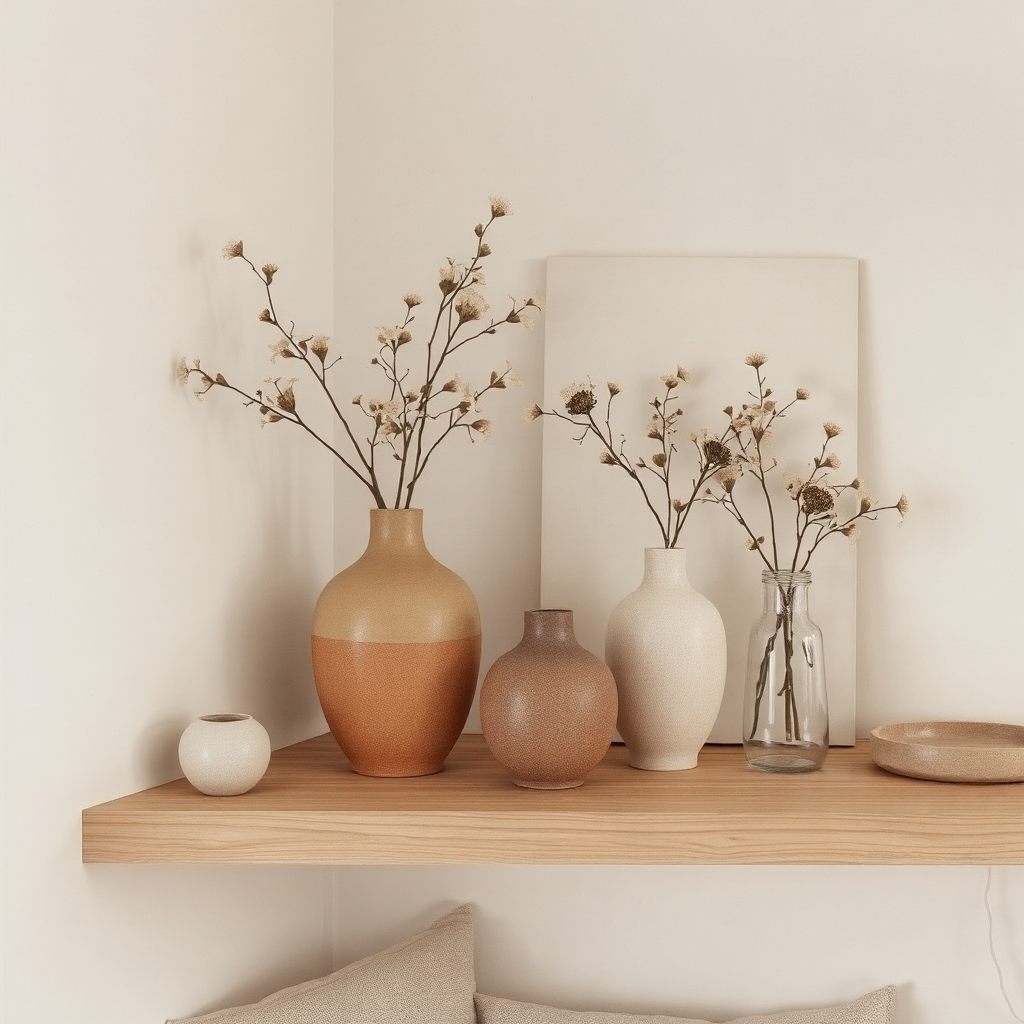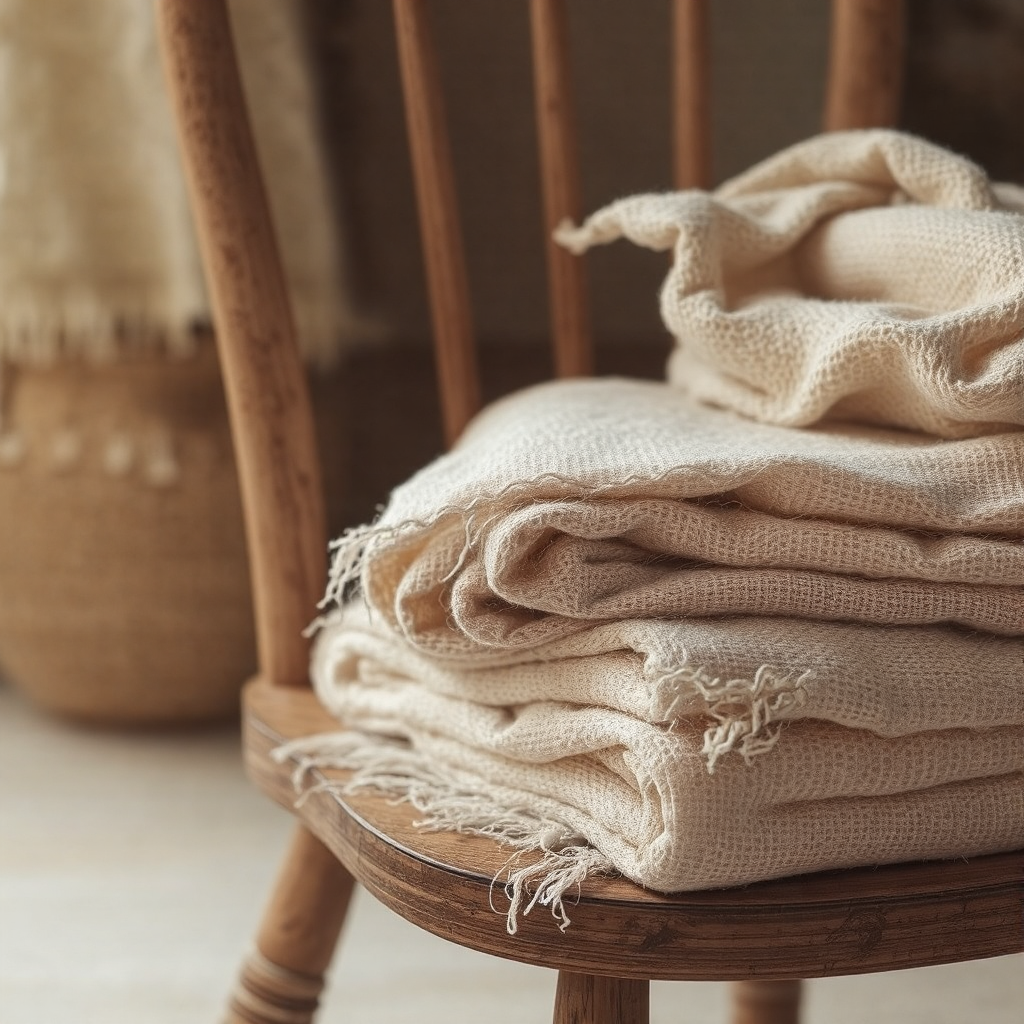Introduction to Material Transformation
Material transformation plays a pivotal role in design and aesthetics, serving as the bridge between raw materials and refined products that evoke specific moods and experiences. The very essence of any creation, be it in architecture, interior design, or product development, begins with the careful selection and manipulation of materials. Raw materials possess inherent characteristics, such as texture, color, and weight, which can significantly influence the atmosphere of a space or product once they are refined and adapted.
The process of transforming these materials is not merely a technical procedure, but rather an artistic endeavor that intertwines functionality and emotional resonance. The choice of materials is crucial; for instance, the use of smooth, cool metals can conjure feelings of modernity and sophistication, whereas warm woods may evoke a cozy and inviting environment. Designers and architects must carefully consider how different materials can be manipulated to achieve the desired emotional tone, ensuring that their choices resonate with the target audience.
Additionally, the transformation process encompasses various techniques ranging from traditional craftsmanship to advanced technologies, each offering unique possibilities for design expression. Whether through molding, layering, or finishing processes, the journey from raw to refined involves a thoughtful approach that seeks not only to elevate aesthetics but also to enhance user experience. Understanding these nuances of material transformation allows creators to craft environments and products that not only meet practical needs but also engage individuals on a sensory and emotional level.
Through this exploration, we will delve deeper into the significance of different materials, the methods of transformation, and the emotional responses they evoke, illustrating the profound impact material choice has on design and aesthetics.
Understanding Raw Materials
Raw materials provide the essential building blocks for design, each possessing unique physical and emotional characteristics that influence the overall mood of a space. Among the most prominent raw materials are wood, metal, glass, and textiles, which have distinct properties that designers harness to create desired atmospheres.
Wood is a timeless material celebrated for its warmth and versatility. It possesses a natural grain that adds texture and character, evoking feelings of comfort and serenity. The various types of wood—such as oak, walnut, and pine—each bring their own hue and texture, allowing designers to convey different moods. For instance, dark woods can create a sense of elegance and sophistication, while lighter woods often elicit a more casual and airy feel.
Metal, on the other hand, contributes a contemporary and industrial edge to design. Its sleek, reflective surfaces can make a space feel clean and polished, while also adding an element of durability. Depending on the type—steel, brass, or copper—metal can invoke a range of emotions; for example, brass may introduce warmth and richness, while stainless steel generally reflects a modern and minimalistic aesthetic.
Glass is celebrated for its ability to create an open and airy atmosphere. By allowing light to flow through a space, glass can enhance feelings of transparency and connection to the outdoors. Its varied forms, from frosted to clear or tinted, can subtly shift the ambiance of a room, thereby influencing how one interacts with the environment.
Textiles provide an additional layer of sensory experience in design. Fabrics can soften a space and introduce color and pattern, which are critical in setting the emotional tone. The tactile nature of textiles—whether it be a plush rug, smooth silk curtains, or knitted throws—invites comfort and accessibility, making the environment more inviting.
Each of these raw materials contributes significantly to the foundation of design, allowing creators to evoke specific moods that resonate with the intended audience. Understanding their individual characteristics is pivotal in crafting environments that are not only functional but also emotionally compelling.
Processes of Refinement
The journey of transforming raw materials into refined products is a meticulous process that involves various techniques aimed at enhancing their aesthetic qualities and emotional appeal. Among these techniques, cutting, shaping, polishing, and treating stand out as crucial steps in refining materials. Each process not only alters the material’s physical appearance but also manipulates the observer’s response, influencing how the piece is perceived emotionally.
Cutting is often the first step in this transformative journey. Precision cutting allows artisans to define shapes and forms that bring out the best features of a material. For instance, in woodwork, the manner in which a log is cut can impact the grain visibility, which significantly affects the overall visual impact of the finished product. Similarly, cutting gemstones with expert care can reveal their brilliance and color depth, resulting in pieces that elicit admiration and desire.
Shaping follows cutting and involves refining the material’s contours to create harmony and balance. This process allows for the creation of three-dimensional forms that resonate with the viewer. Techniques such as molding, carving, or sculpting can bring out the natural characteristics of a material, enhancing its intrinsic beauty. The artistry in shaping can evoke feelings of grace and strength, often prompting an emotional connection with the observer.
Polishing is another key process, essential in achieving a smooth, reflective surface that emphasizes quality. This technique removes any imperfections and brings out the luster of the material. For various surfaces, such as metals or stones, polishing can significantly elevate an item’s perceived value, making it more appealing. The reflective surfaces created through polishing can evoke feelings of clarity and sophistication.
Lastly, treating raw materials involves applying various methods, such as staining, sealing, or finishing, to enhance durability and aesthetics. Treatments alter colors or textures, influencing how materials engage with light and environment, thereby affecting emotional responses. These processes of refinement together illuminate the materials, transforming them into pieces that are not only functional but also rich in emotional resonance.
The Role of Color and Texture
In the field of design, color and texture are instrumental in shaping the psychological perception of a space. These elements do not merely serve aesthetic purposes; they possess the profound ability to influence mood and ambience, effectively transforming any environment. The careful selection and integration of color schemes can elicit a wide range of emotions, making this aspect of design a critical consideration in both interiors and exteriors.
Colors can evoke feelings of warmth, calmness, or energy. For instance, warmer tones such as reds, oranges, and yellows are often associated with feelings of warmth and comfort. Conversely, cooler shades like blues and greens invoke a sense of tranquility and reflect nature’s influence, leading to a more serene atmosphere. The psychological impact of these colors is essential when considering the environment one wishes to create, be it for residential spaces, work environments, or public areas. Each color has its unique properties that can either stimulate or soothe the emotions of the beholder.
Additionally, the texture of materials plays a complementary role in color perception and overall mood. The tactile quality of a material can significantly affect how it is perceived visually. For example, a soft, plush texture can create a sense of comfort and coziness, while a sleek, shiny surface may evoke modernity and sophistication. Textures can vary from rough and natural to smooth and polished, each bringing its unique character to the design. When combined effectively with color, textures can enhance the sensory experience of a space, enriching the atmosphere further.
Through the synergistic relationship between color and texture, designers can craft environments that truly reflect the desired emotional landscape. By understanding these elements, one can effectively manipulate materials to convey specific moods and experiences, ultimately elevating the overall impact of the design.
Case Studies: Successful Transformations
Examining the successful transformation of materials into refined designs offers valuable insights into the intricate relationship between raw materials and the moods they evoke. One notable case study involves the use of reclaimed wood in the design of residential spaces. In a project seeking to create a warm and inviting atmosphere, architects utilized reclaimed timber, which not only contributed to sustainability but also introduced earthy textures and visual warmth. The natural imperfections found in the wood were celebrated, resulting in spaces that felt both organic and sophisticated, fostering a sense of comfort and connection to nature.
Another illustrative instance is the application of metal in modern office environments. In a contemporary workspace design, steel beams were prominently featured. This choice emphasized strength and resilience while its sleek finish brought an element of elegance. Strategic use of lighting further enhanced the mood; when combined with greenery, the juxtaposition of the industrial metal and natural elements created a stimulating yet tranquil atmosphere, conducive to productivity and creativity.
Similarly, the transformation of concrete is highlighted in a public space revitalization project. By skillfully manipulating concrete’s inherent qualities with innovative textures and colors, designers managed to soften its stark, industrial appeal. The textured surfaces and vibrant hues turned an otherwise uninviting material into a visually engaging feature that encouraged public interaction. This case exemplifies how reimagining raw materials can lead to inviting environments that resonate with users on an emotional level.
These case studies underscore the importance of thoughtful material selection and transformation processes in design. By understanding how different materials can be utilized creatively, designers can either accentuate or soften the emotions evoked by a space, thus achieving the intended mood effectively. The interplay between raw materials and refined designs continues to evolve, offering endless possibilities for innovation in various fields.
Cultural Perspectives on Material Use
Throughout history, various cultures have assigned unique values and significances to materials, shaping their use and the emotional responses they evoke. For instance, wood is often associated with nature and warmth in many cultures, making it a popular choice for domestic spaces, while metals like bronze and gold may signify wealth and power. Understanding these cultural associations can significantly influence the transformation of materials, impacting the resulting mood of the final product.
In many Indigenous cultures, materials are chosen not just for their physical properties, but for their historical and spiritual connections. For example, the use of clay in pottery often carries meanings of fertility and sustenance, with handcrafted items embodying narratives that connect the maker with their ancestors. Similarly, fabrics such as silk and cotton have become markers of identity and social standing in several societies, impacting how these materials are perceived and utilized in contemporary design.
Additionally, the way materials are treated and finished can vary significantly across cultures. The Japanese philosophy of ‘wabi-sabi’, which embraces imperfection and transience, encourages the use of natural materials in their raw states, promoting a sense of authenticity. In contrast, the sleek, polished surfaces favored in Western design correspond to values of precision and perfection. Such distinctions illuminate the cultural dimensions embedded within material choices, further influencing the transformation process from raw to refined.
Recognizing and appreciating these cultural perspectives can enhance the design process, allowing creators to draw upon a richer palette of meanings. This understanding not only elevates the resulting aesthetic but also fosters a deeper emotional connection between the finished product and its users. As designers navigate the complexities of material transformation, they can consciously incorporate cultural narratives that resonate with their intended audiences.
Innovative Trends in Material Transformation
In recent years, the field of material transformation has seen significant advancements driven by innovative trends aimed at sustainability and emotional resonance. One of the most notable trends is the growing emphasis on eco-friendly practices. Companies are now increasingly adopting methods that minimize waste and reduce carbon footprints, contributing to a broader movement towards sustainability in design and manufacturing. For instance, the use of recycled materials is on the rise, as designers seek to create products that are not only functional but also environmentally responsible.
Technological advancements have also played a pivotal role in reshaping the landscape of material refinement. The integration of advanced manufacturing technologies, such as 3D printing and automation, allows for precise material manipulation and faster production cycles. This innovation not only enhances efficiency but also enables the creation of intricate designs that were previously unachievable with traditional methods. Furthermore, new composite materials are emerging, combining characteristics of both natural and synthetic substances, thus offering improved performance and aesthetic appeal.
Another critical trend is the emotional connection between users and materials. Designers are increasingly focusing on the sensory aspects of materials, considering texture, color, and light interaction to evoke specific feelings and reactions. This approach aims to create a meaningful experience for the user, transforming utilitarian materials into conduits of emotional expression. By prioritizing user experience, designers can create environments and products that resonate with individuals on a personal level, ultimately enhancing their overall engagement with the material objects.
In conclusion, the trends in material transformation reflect a broader shift towards sustainable practices and technological advancements, driving the evolution of how materials are refined and utilized. As these trends continue to develop, they will undoubtedly influence the future of design, shaping materials that not only meet functional needs but also foster emotional connections with users.
Practical Tips for Designers
When embarking on a design project, the choice and refinement of materials play a pivotal role in shaping the emotional impact of the final outcome. Designers can benefit significantly from systematic approaches to material selection, ensuring that their choices resonate with the intended mood of their projects. Here are some practical tips to consider.
Firstly, understanding the intrinsic properties of materials is essential. Each material carries its own set of characteristics that can evoke different emotional responses. For instance, warm woods can create a feeling of comfort and intimacy, while sleek metals often convey modernity and professionalism. Conducting thorough research on material properties, textures, and finishes enables designers to make informed decisions that align with their concept’s emotional objectives.
Secondly, consider the context in which the design will be utilized. Different settings and cultural backgrounds can influence how materials are perceived. A material that feels inviting in a residential space might not evoke the same sentiment in a corporate environment. By assessing the project’s context, designers can refine their material selection to foster an emotional connection with the target audience.
Furthermore, experimenting with combinations of materials can lead to innovative results. Layering different textures, colors, and finishes can enhance the sensory experience of a space. For example, the juxtaposition of rough and smooth surfaces can create visual interest and evoke complex emotional reactions. Designers should conduct material tests to explore these combinations while keeping the overall emotional intention in mind.
Lastly, feedback from potential users is invaluable. Engaging with stakeholders early in the design process can provide insights into their perceptions and emotional responses to various materials. This collaborative approach ensures that the selected materials effectively embody the desired mood and contribute positively to the overall experience. By implementing these strategies, designers can refine their material choices to create spaces that resonate emotionally with their audience.
Conclusion
Throughout this exploration of the transformation of raw materials into refined elements of design, it has become evident that the emotional impact of design is significantly influenced by the materials and processes employed. As we have discussed, the choice of materials is not merely a technical consideration; it is a crucial factor that shapes the mood and emotional resonance of a given space or object. By selecting materials that align with the desired emotional outcome, designers facilitate an environment that can evoke joy, tranquility, or even nostalgia.
The diverse applications of various materials allow for an extensive range of emotional expressions. For example, the warmth of wood can instill a sense of comfort and homeliness, while sleek metals may convey a feeling of modernity and sophistication. The transformation process, from raw to refined, plays a vital role in accentuating these emotional attributes. Designers are tasked with understanding how the nuances of texture, color, and finish can work harmoniously to create a deeper connection with users.
At the heart of effective design lies an awareness of the emotional responses elicited by different materials. This awareness can guide thoughtful decisions during the design process, leading to spaces and products that not only meet functional needs but also nurture emotional well-being. As the conversation around design evolves, it is imperative for professionals and enthusiasts alike to reflect on their own practices. The insights gained from this examination can serve as a valuable framework for future projects, fostering a more mindful approach to material selection and transformation.
In conclusion, the journey from raw to refined materials in design is not solely about aesthetics or functionality; it is, at its core, an exploration of how these choices can influence emotional responses and enhance the overall experience of space and objects. By embracing these principles, designers can cultivate a meaningful dialogue with users, ultimately enriching their lives through the power of thoughtful design.



